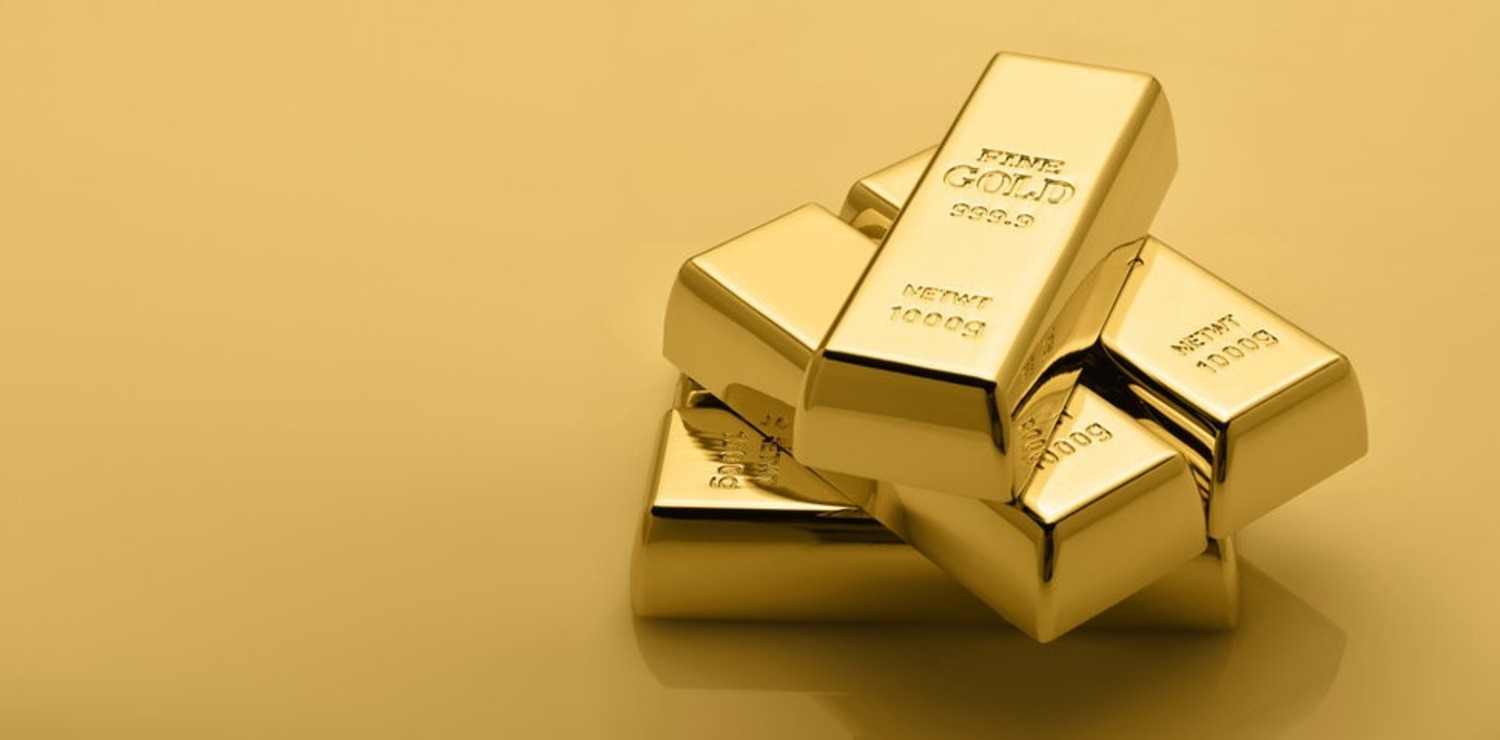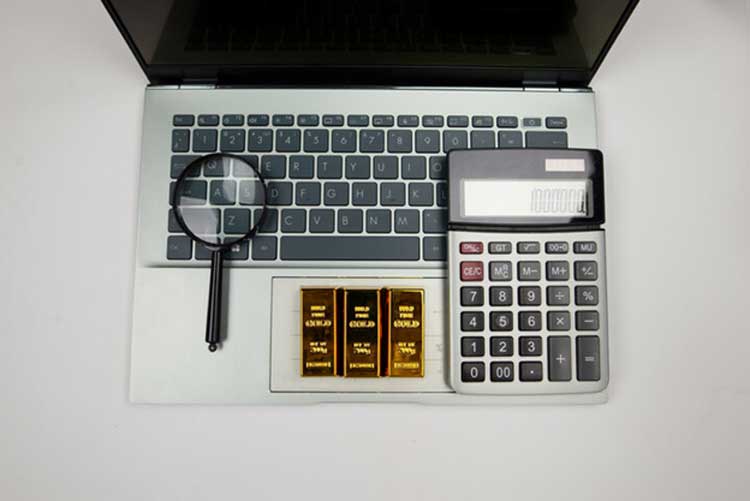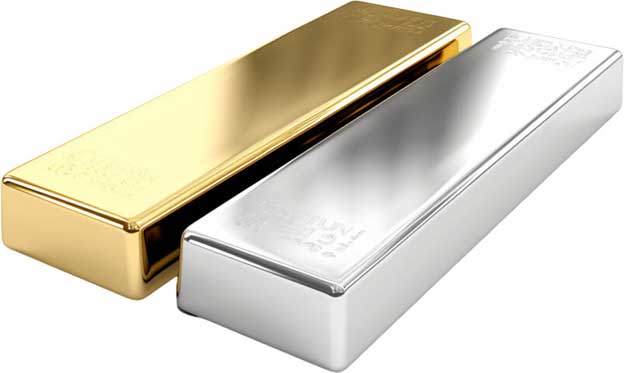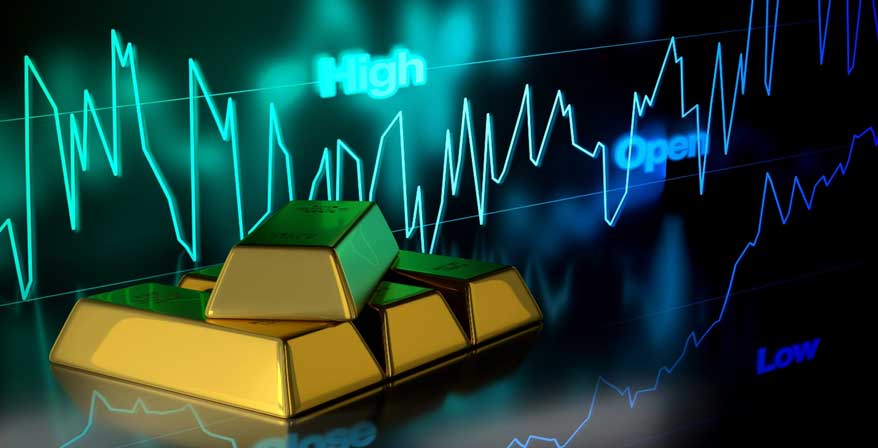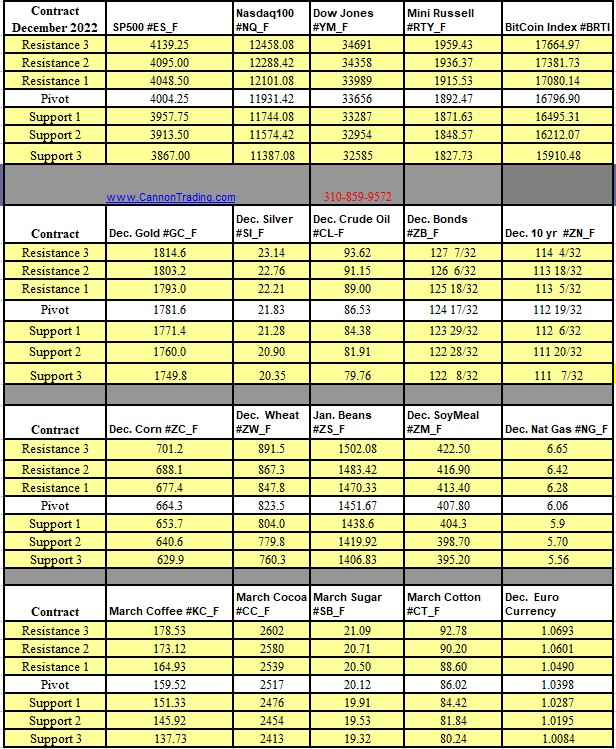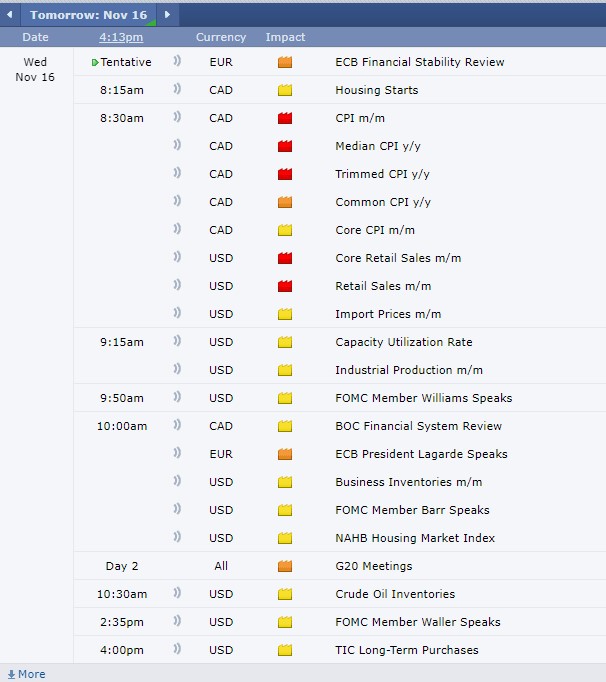Gold futures have long been a cornerstone of the commodities market, serving as both a speculative instrument and a hedge against economic uncertainties. In times of geopolitical instability, economic upheaval, and shifts in monetary policy, gold prices often see significant movement as investors seek safe havens. The recent rise in gold prices, exceeding 1% on a single day, is a reflection of this behavior, driven by escalating tensions in the Middle East, impending U.S. inflation data, and broader global uncertainties.
1. The Mechanics of Trading Gold Futures
Trading gold futures involves entering into a contract to buy or sell a specified quantity of gold at a predetermined price on a future date. Unlike physical gold, futures contracts do not involve the immediate exchange of the commodity but rather a commitment to transact in the future. Traders and investors use gold futures to hedge against price volatility, speculate on future price movements, or diversify their portfolios.
The price of gold futures is influenced by several factors, including:
- Supply and Demand: Physical gold supply, mining outputs, and industrial demand affect futures prices.
- Inflation and Interest Rates: Gold is traditionally seen as a hedge against inflation. Lower interest rates often make gold more attractive as it yields no interest but can appreciate in value.
- Currency Fluctuations: As gold is typically traded in U.S. dollars, the strength or weakness of the dollar can impact gold prices.
- Geopolitical Events: Tensions, conflicts, and wars can drive investors to gold as a safe-haven asset.
2. Current Market Scenario: Gold’s Rise on Safe-Haven Demand
On August 12, 2024, gold prices surged by more than 1%, reaching their highest levels since early August. This spike was primarily driven by safe-haven inflows as traders anticipated critical U.S. inflation data that could influence the Federal Reserve’s interest rate decisions. Spot gold rose to $2,468.25 per ounce, while U.S. gold futures settled higher at $2,504.
Several factors contributed to this rise:
- Geopolitical Tensions: Heightened tensions in the Middle East, particularly involving Israel, Iran, and their respective allies, have created uncertainty. Investors fear a broader regional conflict, which traditionally drives safe-haven demand for gold.
- Technical Buying: According to analysts like Jim Wycoff from Kitco Metals, bullish charts in the gold market prompted technical buying, further supporting price increases.
- Upcoming Economic Data: With the release of U.S. producer prices data and consumer prices numbers imminent, traders were positioning themselves ahead of potential market-moving news. The anticipation of this data, coupled with slightly dovish comments from Fed Governor Michelle Bowman, contributed to a more favorable environment for gold.
3. Geopolitical Tensions in the Middle East: A Catalyst for Gold Prices
The Middle East has long been a region of geopolitical significance, with its vast oil reserves and historical conflicts. Recent events, particularly involving Israel, Iran, and Hezbollah, have escalated tensions, creating a potential flashpoint that could significantly impact global markets, including gold.
a. The Israeli-Iranian Conflict
The conflict between Israel and Iran is a complex and multifaceted issue, rooted in both ideological and geopolitical rivalries. In recent weeks, Israeli forces have been engaged in operations near the southern Gaza city of Khan Younis, amid a broader international push for a ceasefire and to prevent a wider regional conflict.
Iran, through its proxies like Hezbollah in Lebanon and various Shia militias in Iraq and Syria, poses a significant threat to Israel. Any direct confrontation between these two nations could lead to widespread instability in the region.
b. Potential Outcomes and Impact on Gold Prices
If tensions were to escalate into a full-scale conflict, the consequences for gold prices could be profound:
- Safe-Haven Demand Surge: A direct conflict involving Israel and Iran, particularly if it spreads to involve other regional players like Hezbollah, would likely result in a surge in safe-haven demand for gold. Investors traditionally flock to gold during periods of war or significant geopolitical unrest, driving up prices.
- Impact on Oil Prices: Israel’s potential retaliation, particularly targeting Iran’s crude oil processing facilities and production wells, could severely disrupt global oil supplies. The Middle East accounts for a significant portion of the world’s oil production, and any disruption could lead to a spike in oil prices. Higher oil prices can contribute to inflationary pressures globally, further increasing demand for gold as a hedge against inflation.
- Economic Sanctions and Market Volatility: In response to such a conflict, the international community could impose economic sanctions on Iran, further destabilizing the region. Sanctions could lead to increased market volatility, with investors seeking refuge in gold.
- Currency Devaluation: In the event of a prolonged conflict, affected nations could see their currencies devalue due to economic strain. As gold is priced in U.S. dollars, a devaluation of regional currencies could lead to higher gold prices in those markets, potentially increasing global demand for gold futures.
4. The Role of Inflation and U.S. Monetary Policy
While geopolitical factors are a significant driver of gold prices, economic indicators, particularly in the United States, also play a crucial role. The upcoming U.S. inflation data is highly anticipated, as it will provide insights into the Federal Reserve’s potential interest rate path.
a. Inflation as a Driver for Gold Prices
Gold is often viewed as a hedge against inflation. When inflation rises, the purchasing power of fiat currencies decreases, making gold more attractive as a store of value. The U.S. inflation data, particularly the Producer Price Index (PPI) and Consumer Price Index (CPI), are closely watched by traders to gauge the future direction of gold prices.
If the data suggests that inflation is cooling, it could lead to a softer stance by the Federal Reserve, potentially lowering interest rates. Lower interest rates reduce the opportunity cost of holding non-yielding assets like gold, making it more attractive to investors. Conversely, higher inflation could lead to more aggressive rate hikes, which might initially pressure gold prices but could eventually drive them higher as inflationary fears persist.
b. Federal Reserve’s Interest Rate Policy
The Federal Reserve’s interest rate policy is a critical factor in the pricing of gold futures. As of now, markets are pricing in a 49% chance of a 50 basis point rate cut by the Fed in September. Any dovish signals from the Fed, indicating a pause or reduction in rate hikes, could lead to a rally in gold prices.
Historically, periods of low interest rates have been bullish for gold. With the Fed showing signs of softening its stance on inflation, as noted by Fed Governor Michelle Bowman, traders are increasingly bullish on gold. However, this optimism is tempered by the broader economic outlook, including the potential for a recession.
5. Broader Market Dynamics: Silver, Platinum, and Palladium
Gold’s rise has not occurred in isolation; other precious metals have also seen gains. On the same day that gold rose over 1%, silver prices increased by 1.8%, platinum by 2.2%, and palladium by 1.7%. These metals, like gold, are often sought after in times of economic uncertainty.
a. Silver’s Role as an Industrial and Precious Metal
Silver, while also a precious metal, has significant industrial uses, particularly in electronics and solar panels. This dual role can lead to more volatile price movements compared to gold. The recent rise in silver prices suggests that, in addition to safe-haven demand, there may be underlying industrial demand supporting prices.
b. Platinum and Palladium: Catalysts and Supply Concerns
Platinum and palladium are primarily used in the automotive industry, particularly in catalytic converters. Supply concerns, particularly from key producing regions like South Africa and Russia, can significantly impact prices. The recent rise in platinum and palladium prices could be attributed to a combination of safe-haven buying and concerns over supply disruptions in the event of broader geopolitical instability.
6. Trading Gold Futures: Strategies in a Volatile Market
Given the current market dynamics, trading gold futures requires a strategic approach that considers both short-term and long-term factors.
a. Technical Analysis and Charting
Technical analysis, which involves studying price charts and using indicators to predict future movements, is a crucial tool for traders in the gold futures market. The recent bullish patterns in gold charts have prompted technical buying, contributing to the price rise.
Key technical indicators to watch include:
- Moving Averages: The 50-day and 200-day moving averages can provide insights into the market’s trend.
- Relative Strength Index (RSI): The RSI can indicate whether gold is overbought or oversold, helping traders make informed decisions.
- Fibonacci Retracement Levels: These levels can help identify potential support and resistance levels based on historical price movements.
b. Fundamental Analysis: Macroeconomic and Geopolitical Factors
In addition to technical analysis, understanding the broader macroeconomic and geopolitical landscape is essential. Traders need to stay informed about:
- Central Bank Policies: Decisions by central banks, particularly the Federal Reserve, can have a direct impact on gold prices.
- Geopolitical Developments: Conflicts, sanctions, and diplomatic relations in regions like the Middle East can lead to sudden price movements.
- Economic Data Releases: Key economic indicators, such as inflation data, employment figures, and GDP growth rates, should be closely monitored.
c. Risk Management in Gold Futures Trading
Given the volatility in gold prices, effective risk management is crucial. Traders should consider using:
- Stop-Loss Orders: These orders can help limit losses by automatically closing a position when the price reaches a predetermined level.
- Position Sizing: Ensuring that no single trade has the potential to significantly impact the overall portfolio is vital for long-term success.
- Hedging: Traders can use options or other derivatives to hedge against adverse price movements in their gold futures positions.
Navigating the Future of Gold Trading
The recent rise in gold prices highlights the intricate interplay between geopolitical events, economic data, and market sentiment. As tensions in the Middle East continue to unfold, and as the U.S. Federal Reserve navigates its monetary policy path, gold futures are likely to remain a dynamic and potentially profitable trading vehicle.
Traders must stay vigilant, combining technical analysis with a deep understanding of global events to navigate the complexities of the gold market. With the right strategies and risk management practices, trading gold futures can offer significant opportunities in both bullish and bearish markets. However, it is essential to recognize the inherent risks and to approach this volatile market with a well-informed and disciplined strategy.
In conclusion, as the global landscape continues to evolve, the trading of gold futures will undoubtedly remain a critical focus for investors seeking to capitalize on both short-term price movements and long-term trends driven by geopolitical and economic factors. The rise of gold prices by over 1% on August 12, 2024, serves as a potent reminder of gold’s enduring role as a safe-haven asset in times of uncertainty.
To open an account with E-Futures.com, please click here.
Ready to start trading futures? Call US 1(800)454-9572 – Int’l (310)859-9572 email info@cannontrading.com and speak to one of our experienced, Series-3 licensed futures brokers and start your futures trading journey with E-Futures.com today.
Disclaimer – Trading Futures, Options on Futures, and retail off-exchange foreign currency transactions involves substantial risk of loss and is not suitable for all investors. Past performance is not indicative of future results. You should carefully consider whether trading is suitable for you in light of your circumstances, knowledge, and financial resources. You may lose all or more of your initial investment. Opinions, market data, and recommendations are subject to change at any time.
Important: Trading commodity futures and options involves a substantial risk of loss. The recommendations contained in this writing are of opinion only and do not guarantee any profits. This writing is for educational purposes. Past performances are not necessarily indicative of future results.
**This article has been generated with the help of AI Technology. It has been modified from the original draft for accuracy and compliance.
***@cannontrading on all socials.



